The Quest for a Better Football Helmet

Two days after the presidential election in November, just a few blocks from the U.S. Capitol in Washington, D.C., the lobby of the Hyatt Regency hotel was a beehive of activity. To one side, there were signs for “The New American Landscape,” an election-impact conference for politicians and lawmakers. Behind another set of doors a few hundred people gathered to chart a different kind of American landscape—the complicated future of the country’s most popular sport.
There was a compendium of strange bedfellows in this room: the NFL, the NFL Players Association, biomedical and aerospace engineers, executives from Riddell and Schutt—the manufacturers that account for 90% of the NFL’s helmet market—executives from VICIS, the maker of a new, flexible helmet just hitting the market, and neurosurgeons, including Boston University’s Robert Cantu.
“It’s in everybody’s interest,” Jeff Miller, the NFL’s executive vice president for health and safety, told the audience, “that we do more.”
In a true display of bipartisanship in the nation’s capital, Miller asked Thom Mayer, the medical director of the players’ union, to join him at the front of the room. Mayer then asked the audience to consider what it would be like if they stood a one-in-six chance of suffering a concussion on the job—a rough approximation of what NFL players face over the course of a year.
This gathering occurred during Week 10 of the 2016 season, a week in which 14 players appeared on team injury reports for having suffered concussions. By season’s end, 244 concussions would be reported to the league. Against the backdrop of this ever-present threat to player safety, the men and women in the D.C. conference room tried to answer a question that will have far-reaching implications on the game: How much more can the helmet do?
* * *
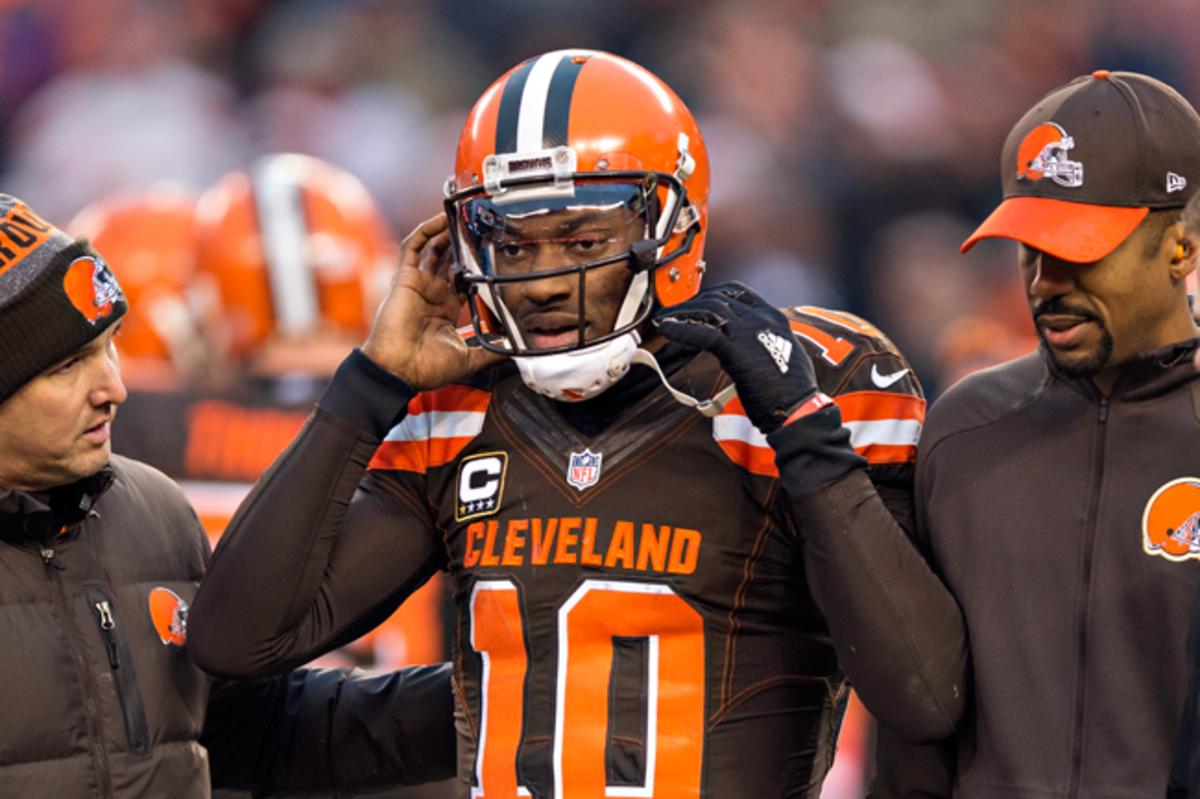
Football is a game of inches, and none is more important than the inch and a half between the outside shell of a helmet and a player’s skull. Since the 1940s, when hard plastic helmets began to replace leather ones, the primary purpose of the helmet has been to guard against skull fractures and hematomas (bleeding on the brain)—catastrophic injuries that led to deaths on the football field in the early 1900s. In recent years, however, scientific studies have led to a better understanding of the short- and long-term consequences of blows to the head. That, coupled with myriad stories about former NFL players experiencing poor mental health in retirement, has changed the expectations for the modern helmet.
In February 2016, in an Indianapolis conference room at the combine, the NFL owners’ health and safety advisory committee held an annual meeting in which they review injury data. Among those in the room: Cowboys owner Jerry Jones, Giants co-owner John Mara, and John York, the 49ers’ co-chairman and a retired pathologist. They were all alarmed by the concussion data from the 2015 season. The number of diagnosed concussions, in both preseason and regular-season practices and games, totaled 271. And the number diagnosed in regular-season games (182) was up 58 percent from 2014—and 18% over the four-year average. They all realized the issue of head trauma was not going away, and they wondered: What more could be done with helmets?
• JENNY VRENTAS: Harvard’s Advice for NFL Player Health and Safety
As a football fan, you have likely heard the analogy of the brain being compared to a carton of eggs: while a case can stop the shells from cracking, the yolks can still be scrambled inside. In 2014, a Federal Trade Commission report probed the safety claims of the football helmet industry and warned that no manufacturer can make the claim that a helmet can prevent concussions. Now, while shopping for a helmet, consumers are met with a warning like the one that pops up on Schutt’s website, in all caps: “No helmet system can prevent concussions or eliminate the risk of serious head or neck injuries while playing football.” To proceed, you have to click, “I understand.”
Though the medical community understands the nature of concussions better than ever, the injury remains something of a riddle for doctors and scientists, because it presents in different ways for different people. One long-held theory was that the brain sloshes back and forth during a collision, striking the rough inner surface of the skull and rebounding against the opposite side—a violent act that causes bruising and swelling. Most experts now suggest looking at concussions in a different way—that the forces most likely to cause this so-called “invisible injury” are the rotational ones that twist the head, causing nerve cells to stretch and twist and strain.
Because the head is round and most hits are off-center, almost every collision in football involves significant rotational forces. For more than 40 years, however, the only safety standard helmets have had to pass to reach market is a vertical drop test that measures how well they handle linear, straight-line forces that cause injuries such as skull fractures. That will change in 2018, after the National Operating Committee on Standards for Athletic Equipment (NOCSAE) voted to include a rotational threshold in its standard. The NFL and the NFLPA jointly do their own testing that takes into account the critical rotational forces—but, for decades, the market standard has been a simple pass/fail test for the bare minimum of what forces a helmet should be able to withstand.
• KALYN KAHLER: The Town That Doesn't Tackle
The NFL is now getting involved in equipment innovation in a way that hasn’t really been seen in professional sports. A few months after that 2016 combine meeting, Jeff Miller, the executive VP for health and safety, went back to the owners and asked for a $100 million investment, $60 million of which would be used to stimulate the helmet industry. The league created a nonprofit organization, Football Research, Inc., to oversee an “Engineering Roadmap”—a five-year plan to find better equipment solutions by offering incentives for new innovations and researching specific answers about what happens on the field when a player is concussed. (Football Research, Inc., has a four-person board of directors of independent engineers and doctors, and Duke University is managing the series of TECH challenges to support and spur on promising new ideas). The goals: A better overall helmet in three years, and position-specific helmets in five years.
At the symposium in Washington, D.C., presenters used the example of the auto industry, which, in response to high fatality rates in the 1960s, began taking a systematic approach to injury prevention—including crash test programs, enhanced safety regulations and the adoption of new design features. The NFL isn’t a regulatory body like the Department of Transportation, but it has a deeply vested interest and the resources to invest in this endeavor.
“There’s a huge sensitivity to the concussion problem: What can be done to address it? Why isn’t it being addressed by current protective equipment?” says Jeff Crandall, director of the University of Virginia’s Center for Applied Biomechanics and chair of the NFL’s Head, Neck and Spine Engineering Subcommittee. “Coming up with a path forward—where we can at least support the idea that we are working on solutions that are going to reduce the injury—that’s crucial. So people are aware that it’s being worked on; that someone is paying attention to it.”
* * *
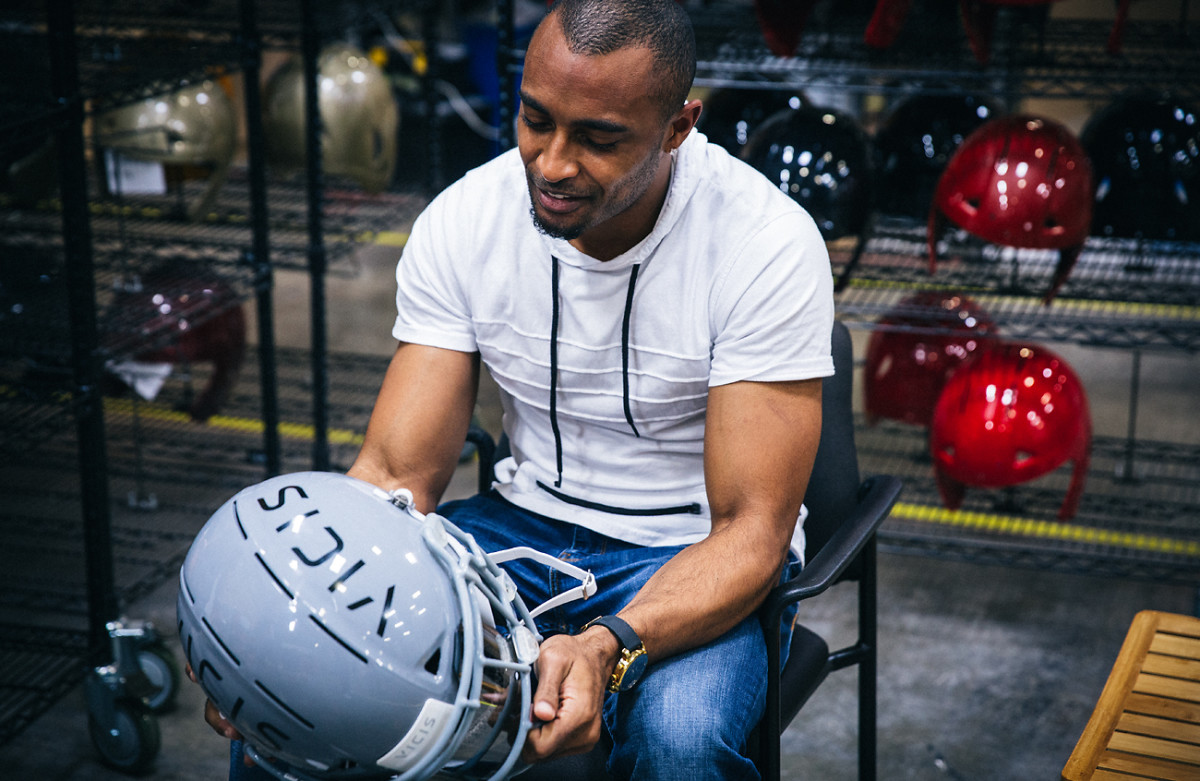
Doug Baldwin has worn the same helmet model in each of the past five NFL seasons. When he thinks back to the helmet he first wore, at age 6 in Pensacola, Fla., the Seahawks’ receiver notices one main difference now: more padding.
That’s not to say there haven’t been other steps forward in helmet design over the last 20 years. Schutt, for example, says there used to be three to five years between major helmet launches; that time frame has now shortened to two to three. Newly released helmets continue to outperform previous ones in reducing the forces transferred to the head, but much of the change has been incremental, updating current designs to be slightly better. The need has outpaced the innovation.
“Science and medicine can barely agree on what the definition of a concussion is or how one occurs,” says Glenn Beckmann, director of marketing communications for Schutt, the second-largest provider of NFL helmets. “So it’s a daunting challenge to build a product to standards or ideals that aren’t in existence yet.”
• JENNY VRENTAS: The NFL, the Grant Money, and the Business of Concussion Research
But another factor is the helmet market itself. It’s relatively small, on the order of $100 million, compared to, for example, an auto industry that rakes in $2 trillion in annual revenue. And it’s controlled mainly by two entities, Riddell and Schutt. Insular markets often tend to restrict innovation. For 24 years, the NFL had a licensing agreement with Riddell as the official helmet of the NFL. Players could wear any helmet of their choosing, but Riddell was the only company whose logo could be displayed. The league ended that arrangement in 2013, eliminating any perception of endorsing one brand over the others. Still, multiple entrepreneurs and small business owners describe the helmet industry as nearly impossible to break into. Rawlings, the major sports equipment manufacturer, re-entered the helmet and shoulder pad business in 2010, only to exit again five years later.
In the annual helmet testing results released by the NFL and the NFLPA for the 2017 season, four manufacturers finished in the top-performing group: Riddell; Schutt; Xenith, a smaller company that broke into the market in 2009; and VICIS, the newest company on the scene. VICIS’ Zero1 helmet tested the best and is listed as the top-ranked helmet on a poster that will be displayed in all NFL equipment rooms (the performance of the 13 other helmets in the top-performing group was not statistically significantly different).
VICIS’ design literally turns the traditional hard polycarbonate helmet that’s been used for decades inside out. A stiff plastic shell inside still protects against skull fractures, but it’s the first helmet to have an outside surface made of a flexible polymer that deforms locally upon impact, rather than making that familiar crack sound. The concept is the same as that of a bumper on a car: The material bends, thereby slowing down the impact and reducing the force transferred to the person inside, according to Newton’s Second Law of Motion (force=mass x acceleration). The outer and inner layers are connected by a matrix of columns that flex in all directions to absorb linear, and most importantly, rotational forces.
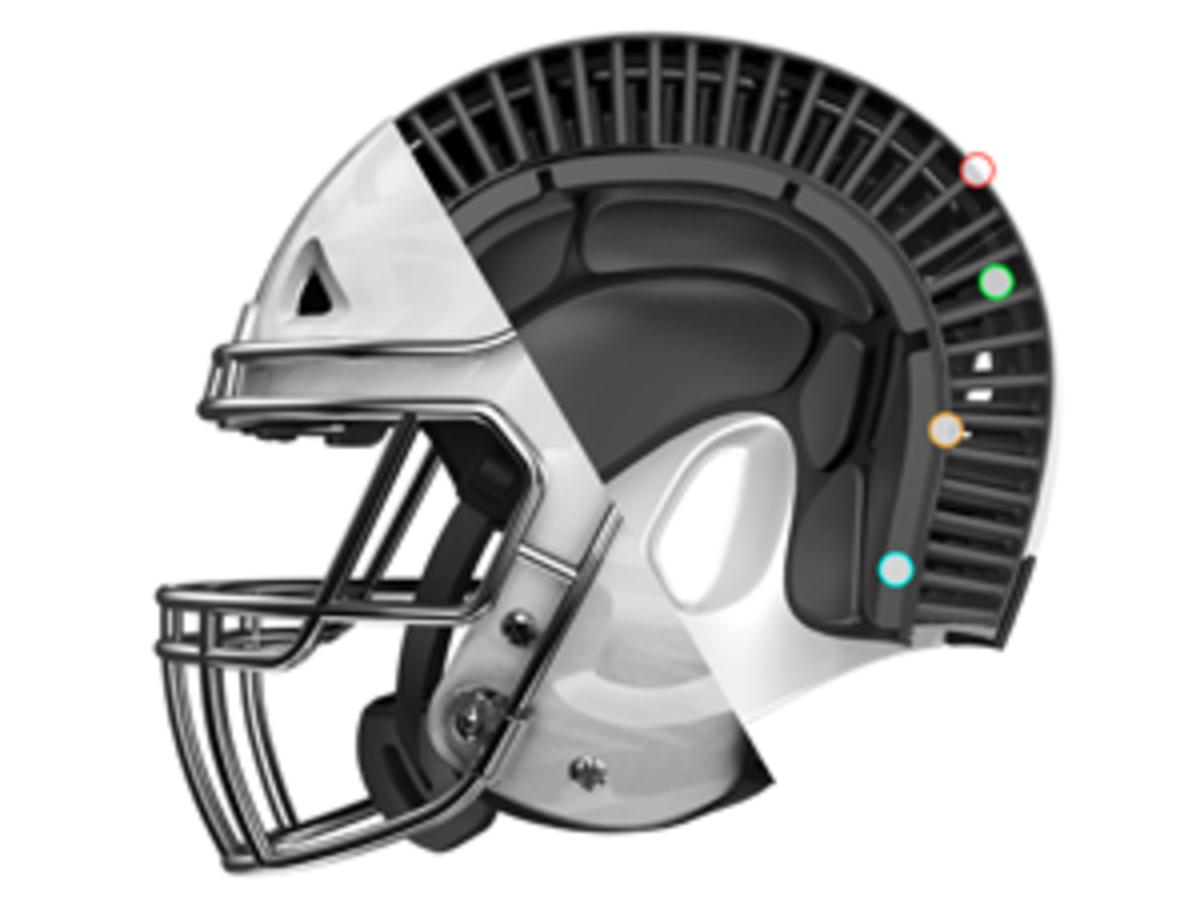
The concept behind VICIS’ helmet was originally sketched on a napkin by Sam Browd, a pediatric neurosurgeon at Seattle Children’s Hospital who has had to retire young athletes from contact sports because they’ve suffered numerous concussions. About four years ago, he was at a pediatric neurosurgery conference in Hawaii, listening to a presentation on a new foam liner for a football helmet, when he was struck by the idea that such stepwise changes in helmet technology may not be enough.
“This is my opinion: It’s very difficult, when you have an industry that has been going on for decades, to completely blow up your own product and say this is not the right path,” says Browd, who also serves as one of the NFL’s unaffiliated neurotrauma consultants at Seahawks home games. “It’s a very expensive and challenging thing.”
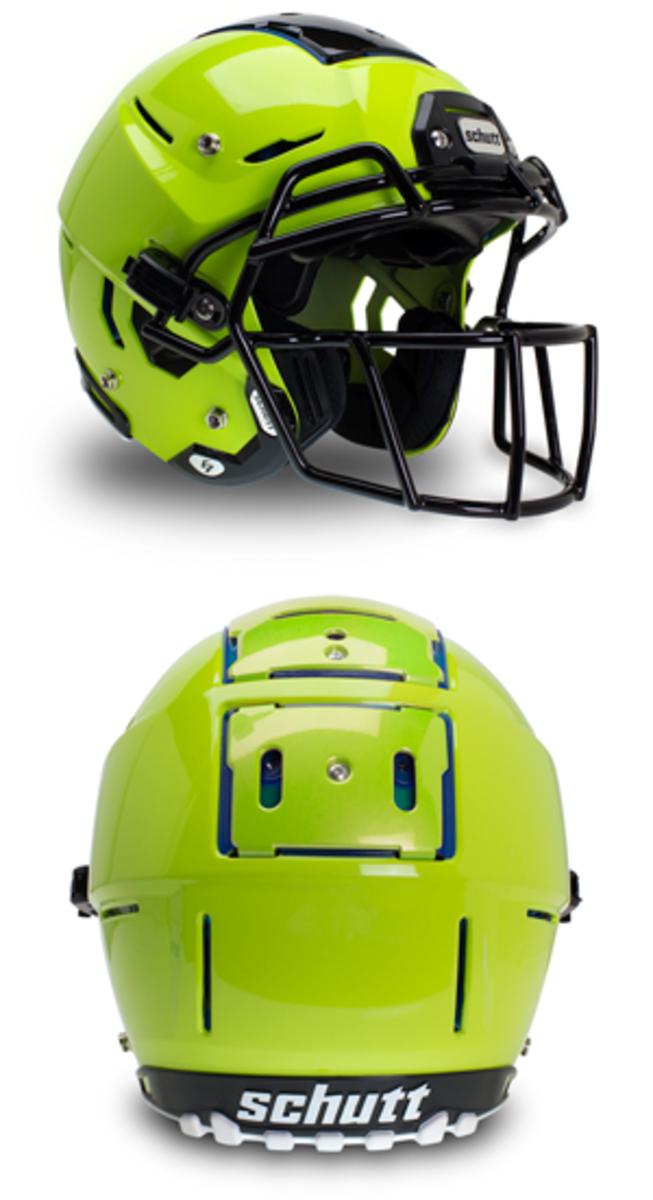
Execs from Riddell and Schutt point to some of the recent advances in their own technology. Riddell’s SpeedFlex helmet has flexible components, including a hinged rubber-padded panel near the crown of the helmet; this year, the company is launching its Precision Fit technology that uses 3-D scanning to create a custom-fit helmet liner for a player’s head (starting at the college and pro levels). Schutt has introduced the lightest helmet on the market in the last year, and another model uses exterior “Tektonic Plates” that move independently from the rest of the helmet to address rotational forces. “We are driving to innovate as fast as we possibly can, given the state of the research that informs the products,” says Thad Ide, Riddell’s senior vice president of research and product development. “A lot of the research has yet to be done.”
Because a few major players dominate the helmet industry, innovation is harder to come by and major hurdles exist for entrepreneurs trying to bring a game-changing product to market. For starters, every football player already has a helmet, so new customers can only be added by stealing them away from the incumbents. Product liability insurance is expensive, and multiple class-action lawsuits threaten the largest company, Riddell. (Among the ongoing litigation: former NFL and NCAA players seeking damages for the helmet-maker allegedly failing to protect players from brain injuries and their known risks. In response to the lawsuit filed earlier this year from former college players, Riddell issued a statement that it would “aggressively defend this latest action as it does all frivolous litigation.”) Furthermore, Riddell and Schutt have been trading intellectual property lawsuits for nearly a decade. In 2010, Schutt was forced to file for bankruptcy after losing a $29 million judgment to Riddell over patent infringement. For all of these reasons, the industry hasn’t been a magnet for entrepreneurs and traditional avenues of venture capital.
• ROBERT KLEMKO: The NFL Can’t Outrun a Legacy of Toradol Abuse
VICIS, which received its initial grant through the University of Washington, says it would have been difficult to launch the company outside of a university. They also got an assist from the NFL: They won one of the league’s Head Health Challenges, which the company says provided them with both validation in the sport and $1.1 million in grant funding. Says VICIS CEO Dave Marver, “The whole NFL grant program in general is a recognition of the fact that it has been a stagnant industry and the pace of innovation has not kept up with the need. The NFL has stepped in and filled an important void.”
VICIS shipped helmets to all 32 NFL equipment rooms a few weeks ago for players to try in OTAs, and Baldwin is one of a handful of Seahawks players who plan to wear the VICIS helmet during the 2017 season. He was introduced to the technology two years ago by the team’s equipment manager, and now serves as a player advisor for the company. The fact that a current player has worked with a helmet company to inform its design speaks to the heightened awareness around player safety—and the fact that today’s players are expecting more out of the gear they wear on their heads.
“You think, OK, it’s just a helmet, it is what it is, and there’s nothing you can really do about it,” Baldwin says. “But being exposed to this new technology, you realize there is something we can do here; there is something that can be improved.”
* * *
Helmets are worn by athletes at all levels of contact sports. But the need for a better product at football’s highest level—where players are bigger and faster, and the forces of impact are greater—is its own unique problem to tackle.
A portion of the NFL’s $60 million earmarked for developing better protective equipment solutions will be spent on trying to more precisely characterize what exactly happens on the field when players are concussed. Inside the sheer number of concussions in the NFL each year is a cache of information about how and why those injuries occur.
Over the past two seasons, a little less than half of all in-game concussions resulted from helmet-to-body contact; about one-third came after helmet-to-helmet contact; around 20% from helmet-to-ground collisions. Nearly half of those helmet-to-body hits came from hits to the shoulder, a reflection of new tackling techniques instructing players to aim for the shoulder instead of the head. Since 2015, a research group at the University of Virginia, led by Jeff Crandall, has even gone so far as to record 140 different variables for each concussion that occurs in an NFL game: scenario, player behavior, impact location, number of impacts, etc.
• JENNY VRENTAS: The NFL’s Eye in the Sky Sees Everything, Often More Than Once
During a weeklong project at Indianapolis’s Lucas Oil Stadium last fall, a team of three dozen scientists recreated 60 concussive hits that took place during the 2015 season. They hooked crash test dummies up to sensors and measured the exact motions that resulted in concussive injuries using 3-D motion cameras. The NFL is also aiming to work with the players’ union to outfit a cross-section of players at different positions with head-impact sensors for the 2019 season—not as a diagnostic tool but as a way to better characterize impacts at this level. It’s a measure they tried out in a pilot program a few years ago, but the technology then wasn’t deemed accurate or sensitive enough to be useful. Earlier this year, the NFL shared with the helmet industry the specs they need for sensors to work in the NFL environment, including being able to measure both linear and rotational acceleration.
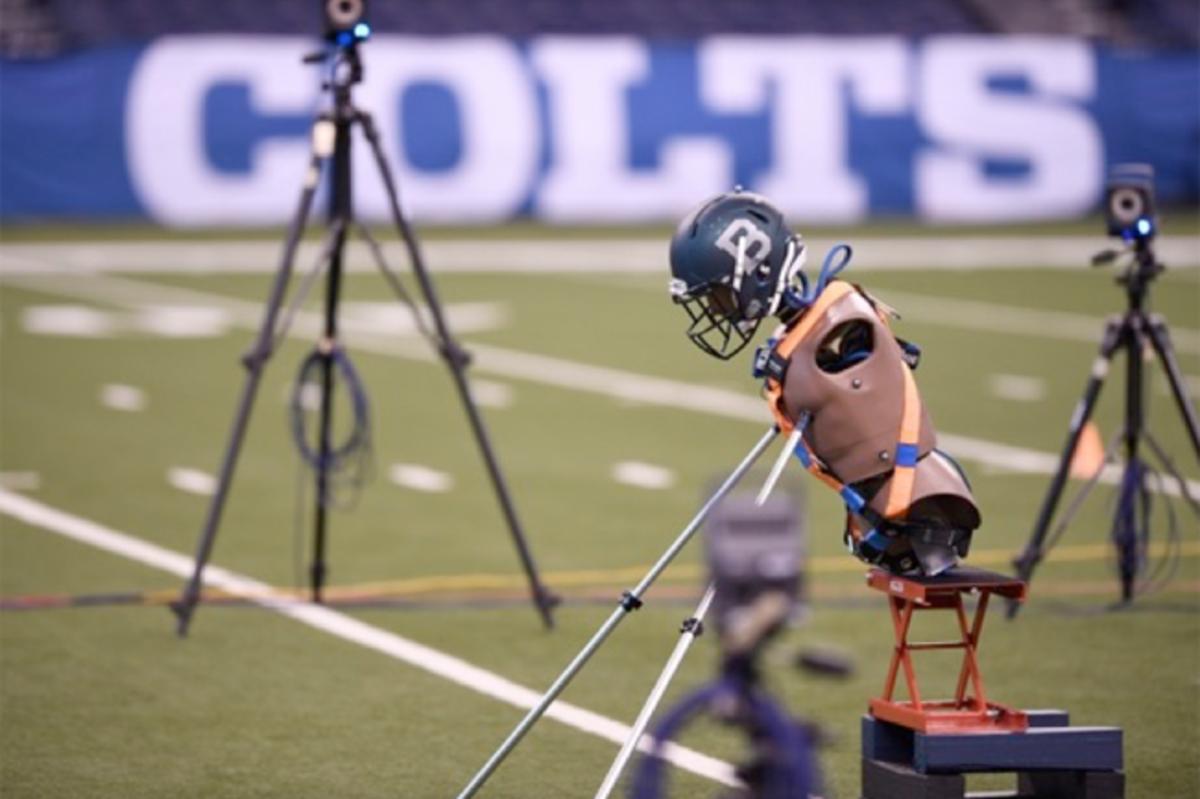
Position-specific helmets make sense, especially when you consider that players at different positions already wear different cleats and shoulder pads. The needs for linemen, who can sustain upwards of 1,000 sub-concussive blows in the trenches over the course of a season, are very different from those who play wide receiver and defensive back: in the secondary, collisions are fewer but higher-energy. But getting to the NFL’s stated goal of position-specific helmets by 2020 will require more information about those different needs. Just like auto manufacturers being given safety thresholds to meet, the idea is for helmet makers to have access to the same kind of central resources to inform their designs. And just like five-star auto safety ratings are updated for variations such as rollover crash testing and automatic emergency braking, the NFL and NFLPA want to update their helmet testing and include a measure for helmet-to-ground impacts.
“The automotive industry might be 50 years ahead of sports in terms of the tools and resources they bring to the problem,” says Richard Kent, who leads the Automobile Safety Research Group at the University of Virginia and is a consultant to the NFL. “We still to this day try to design the front ends of SUVs to not hurt children in pedestrian crashes. And you think about the mass imbalance there, but that doesn’t mean we give up and say, ‘There will always be pedestrian fatalities.’ In my mind that’s harder to do than [address concussions in] the game of football.”
• JENNY VRENTAS: Helmetless Football? It’s the New Practice at New Hampshire
The NFL money is also being used to seed what league executives hope can be disruptive innovations in the helmet industry—similar to the grant VICIS received a few years ago. Using Duke University as a partner, the NFL will fund as many as 15 different innovations in protective equipment over the next five years through a HeadHealthTECH Challenge. Duke’s Clinical and Translational Science Institute, which works with scientists to move ideas from the laboratory to the marketplace, will choose up to three potential equipment innovations each year. The winners will be funded for a year’s time, with the chance to be renewed, and will be able to use the university’s infrastructure to help them help test, develop and refine their ideas.
The first two were chosen last month.
VyaTek Sports received $190,000 for development and testing of its Zorbz technology, patches made of a highly efficient energy-absorbing material that can be attached to the outside of a helmet. They’re single-use, just like the padding inside a bicycle helmet, which is to be replaced after a significant impact. And the makers of Guardian Cap, the familiar soft-shell helmet covers many top college programs use on the practice field, received $20,000 for biomechanical testing of their product. When the caps first went commercial five years ago, the company did testing for the worst-case scenario—to make sure they didn’t cause helmets to be less effective. Now, they’ll be able to test their product’s efficiency within a range of velocities, honing in on whether this kind of technology is more useful for certain position groups—for instance, the lower-velocity impacts offensive linemen rack up.
Both are independent companies that say they’ve faced greater hurdles in the helmet business than any other sports equipment field they’ve worked in. There’s a great risk involved in this business; Erin and Lee Hanson, owners of Guardian Cap, say close to 25% of their revenue is spent on product liability insurance. And there are only a handful of options to pitch your technology to an existing helmet company. “Very, very few companies want to bet their future products on somebody else’s technology,” says Howard Lindsay, founder of VyaTek Sports. “For inventors like me, I have been beating my head against the wall for five years trying to find somebody that would help move this forward.”
Dr. Robert Cantu, one of the leading voices on brain injuries in sports, says the biggest measure the NFL could take does not have to do with equipment. The league has made 47 rule changes since 2002 to try to reduce the amount of head trauma in the game, but Cantu advocates strengthening the rules even more to legislate intentional targeting of the head out of the game (which college football has already done). It’s unlikely, he believes, that a helmet will ever dramatically reduce the rotational forces of football’s collisions. But he allows that the NFL is going to great lengths to answer that question in a way that has never been done before. “From that standpoint, I give them great credit,” Cantu says. “There are other professional sports that also have a high risk of head trauma, and none of them are putting a fraction of the money toward research as the NFL. I don’t personally think that technology is going to solve the problem, but I certainly don’t have a problem if people who have money are spending it to see if it can help.”
* * *
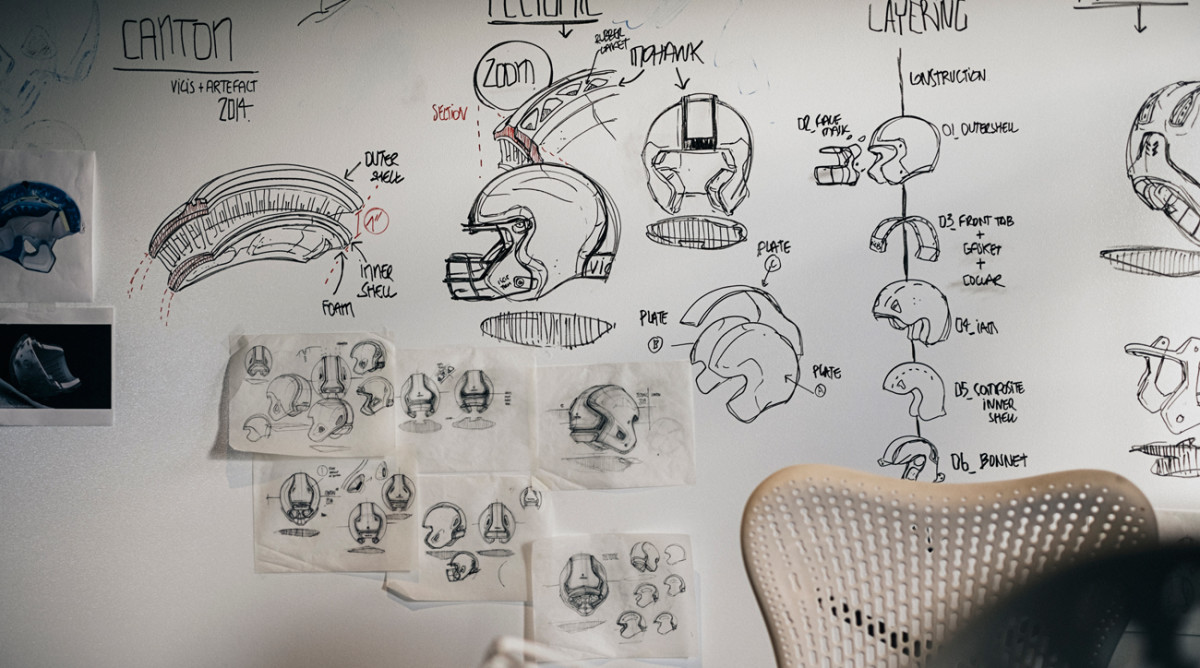
Participation rates in tackle football for kids aged 6-12 peaked in 2009, according to data released by the Sports & Fitness Industry. A 2015 Harris Poll found that 25% of parents don’t let their kids play some contact sport because of fear of concussion. And at the game’s highest level, many of today’s NFL players, like Baldwin, play with a nagging worry in the back of their minds about what their health will be like in 30 years; if they’ll face CTE or cognitive issues like scores of retired players. “I try not to think about the negative things that can come about,” he says. “I try to think about all the things I can do now to prevent those negative things from happening.”
That’s why the helmet matters: It’s the only physical barrier between the brain and the forces that can cause one of the most traumatic injuries in sports. How much more can the helmet do? The NFL is betting $60 million—and much more—on the answer being more than you think.
• Question? Comment? Story idea? Let us know at talkback@themmqb.com
